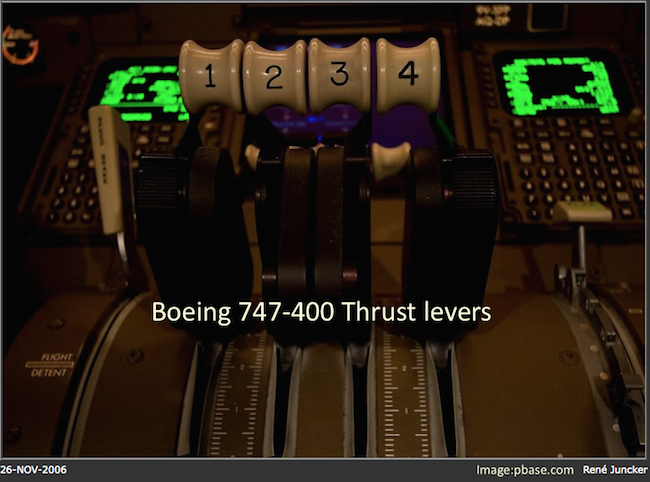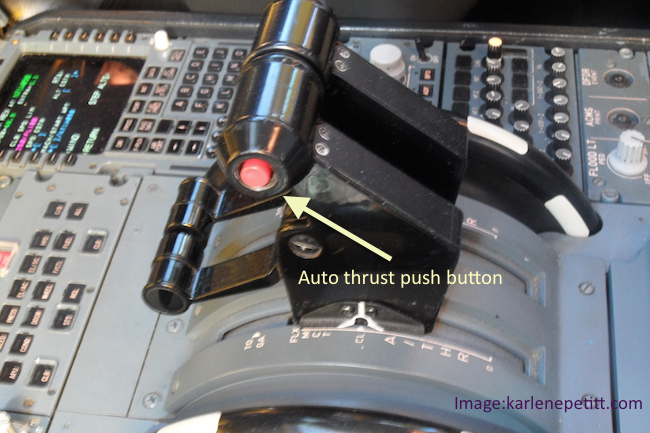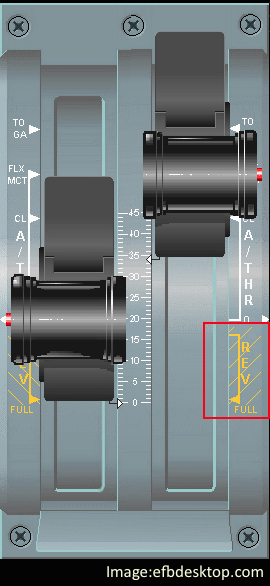Engines » Thrust levers
Thrust lever–Thrust levercontrols the power output of an engine. In turbine engines, it controls the air mass flow-rate injected to the engine; in piston engines it (throttle) controls the fuel/air mixture delivered to the engine.
An aircraft with 4 engines will have 4 thrust levers, one lever for each engine. Generally they are always moved in unison, except ground operations where pilot may require more power on one engine than another for turning purposes and in the air for single engine operations.
In a jet engine, thrust is disproportionate to thrust lever position. Since jet engines are more efficient at high r.p.m, the slightest thrust lever movement near the top of its range produce more thrust than near the bottom. For instance, an inch of thrust lever movement at a high r.p.m. may produce more thrust than at low low r.p.m for the same inch movement.

There are 4 detents for thrust lever position; idle, climb, maximum continuous thrust, and take-off/go-around.

The thrust levers also have a pushbutton that can be used to disconnect autothrust. When autothrust is engaged, the levers will not move.

Thrust levers also have thrust reverser levers in front. They are operated by moving the levers up and back. There is a detent for idle reverse position. Moving the levers past this position increases reverse thrust. The reverse thrust levers for number 1 and 4 engines are interlocked and cannot be moved beyond the idle position unless the thrust reversers on both engines are fully deployed. The thrust reversers can only be operated on the ground with a signal from the main landing gear control interface unit (LGCIU)

